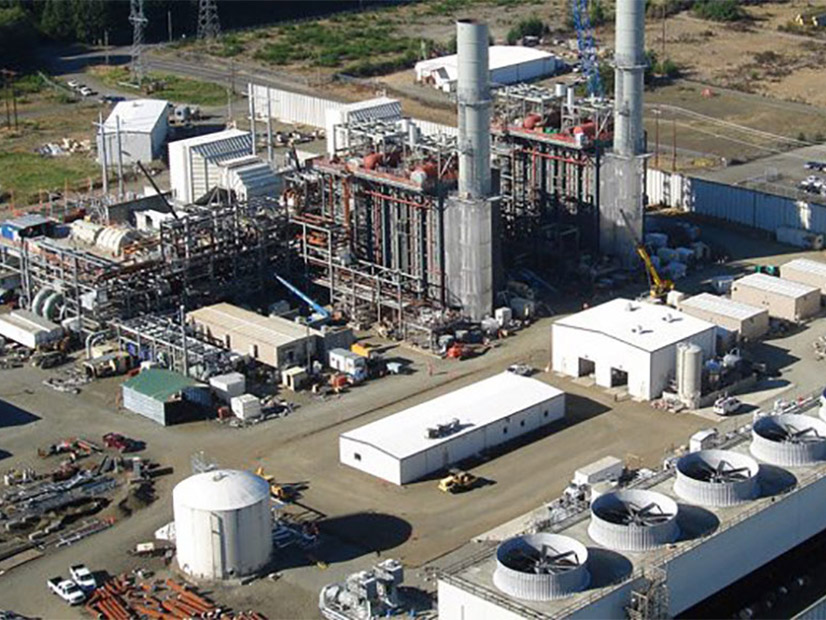
The non-utility owner of a Washington gas-fired power plant can receive an initial allocation of free cap-and-trade allowances from the state, a government board decided Tuesday.
Washington’s Energy Facility Site Evaluation Council (EFSEC) unanimously approved extending the allocation to the 620 MW Grays Harbor Energy Center, which is owned by independent power producer Invenergy. The council’s discussion was limited to tweaking the language of the approval document.
The Grays Harbor plant is the only gas-fired facility in Washington that is not owned by a public utility, which means it did not receive the same no-cost carbon allowances granted to utility-owned power plants under the state’s new cap-and-trade program, which goes into effect on Jan. 1, 2023. Carbon emissions are calculated the same way for both utility- and non-utility-owned plants under the program.
The plant’s officials protested this discrepancy to the Washington Department of Ecology in June. “All the state’s power plants need to be on the same footing,” Grays Harbor Energy representative Torey Mielke said during a June 21 public hearing. (See Independent Power Producer Sees Risk from Wash. Cap-and-trade.)
Invenergy officials also expressed concern about their plant having to compete with out-of-state power producers that don’t have to spend money on the carbon-combating measures now required in Washington.
Under cap-and-trade, carbon emitters must acquire allowances for specific amounts of carbon dioxide pollution, which they can buy, sell or trade with other businesses. The maximum volume of statewide emissions would decrease over time.
The Ecology Department’s plan calls for an undetermined number of emissions allowances to be auctioned four times a year to smokestack industries. The first two auctions are scheduled for the first half of 2023, and the state will set the number of allowances 60 days prior to the auctions.
Companies would bid on the allowances in clusters of 1,000 individual allowances. The number of allowances will be decreased over time to meet 2035 and 2050 decarbonization goals. If Washington chooses to join the Western Climate Initiative, which includes California and Quebec, participants would expand their purchase and trading territory to those two areas.
For each auction, a specific number of allowances would be made available to bidders. All bids must be above a certain price level set in advance by the state. The highest bidder would get first crack at the limited number of allowances, while the second highest bidder would get the second crack, followed by additional iterations. The auction ends when the last of the designated number of allowances is bid upon. Then all the successful bidders pay the same clearing price set by the lowest successful bid.
Bidding companies are limited to acquiring 4-10% of the total number of allowances, depending on various criteria.

